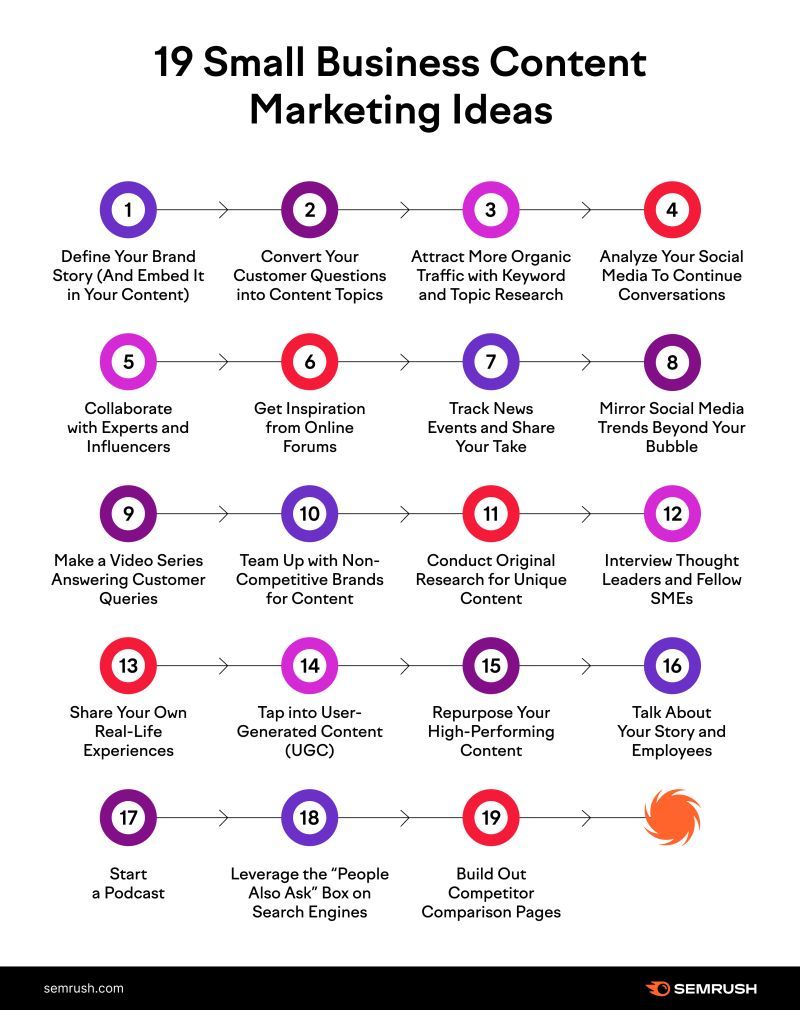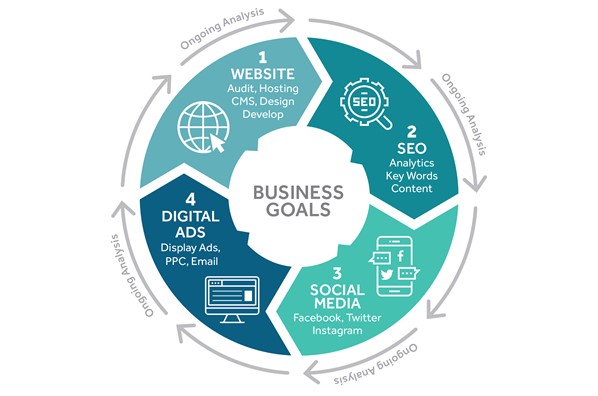15 Creative Content Marketing Ideas to Boost Your Strategy
Content marketing is one of the most effective ways to engage with your audience, build your brand, and drive traffic to your website. However, coming up with fresh and exciting content ideas can be a challenge. Whether you’re a seasoned marketer or just starting out, having a variety of content marketing ideas at your disposal is essential for keeping your strategy dynamic and impactful.

In this guide, we’ll explore 15 creative content marketing ideas that can help you engage with your audience and achieve your marketing goals.
1. Create How-to Guides and Tutorials
People love to learn, especially when it comes to solving problems. Creating how-to guides and tutorials can position your brand as an expert in your industry. These pieces of content provide value to your audience by answering questions and offering practical solutions.
For example, if you sell products, you can create a step-by-step guide on how to use them effectively. This will not only help your audience but also boost your SEO by using long-tail keywords that attract search traffic.
Example:
-
“How to Start Your Own Blog: A Beginner’s Guide”
-
“How to Optimize Your Website for SEO”
2. Develop Case Studies
Case studies are powerful content marketing tools that showcase real-life examples of how your product or service has helped others. By sharing success stories, you build credibility and trust, which are key for converting leads into customers.
Your case study should highlight the challenges, the solution you provided, and the results achieved. Be sure to include metrics and tangible outcomes, such as increased revenue or improved efficiency, to demonstrate the impact.

3. Leverage User-Generated Content
User-generated content (UGC) is an excellent way to build trust and engage your audience. UGC can include customer reviews, photos, videos, or even social media posts where customers mention your brand.
Encouraging your audience to create content around your product or service not only strengthens your relationship with them but also acts as free marketing. Don’t forget to share their content on your platforms, giving credit where it’s due.
4. Host Webinars and Live Streams
Interactive content such as webinars and live streams allows you to engage with your audience in real time. These events provide an opportunity to dive deeper into industry topics, showcase new products, or answer audience questions directly.
Promote these events ahead of time and encourage attendees to ask questions or share their thoughts during the session. Afterward, you can repurpose the content into blog posts or video snippets to reach a broader audience.
5. Create Infographics
Infographics are one of the most shareable forms of content. They combine visuals with data, making complex information easier to digest. Infographics are perfect for topics that involve statistics, research findings, or step-by-step processes.
When designing your infographics, keep them clean and visually appealing. Use brand colors, legible fonts, and concise messaging to make sure they resonate with your audience.

6. Write Listicles
Listicles are blog posts written in the form of a list, which makes them easy to scan and read. The structure helps break down complex ideas into bite-sized chunks, making them ideal for readers on the go.
Some popular listicle ideas include:
-
“10 Tips for Better Time Management”
-
“7 Ways to Boost Your Social Media Engagement”
Listicles perform well in SEO, especially when they target long-tail keywords or specific questions that people are searching for.
7. Run Contests and Giveaways
Everyone loves a good contest or giveaway, especially if there’s something valuable on the line. This type of content helps you grow your audience and increase brand awareness quickly.
To make your contest successful, ensure that it aligns with your audience’s interests. Promote the contest on social media and ask participants to share your content, increasing your reach in the process.
8. Create E-books
E-books are perfect for offering in-depth insights on a specific topic. Unlike blog posts, e-books allow you to delve deeper into subjects and provide detailed information to your audience.
You can offer your e-book as a lead magnet to collect email addresses or as a valuable resource for your existing audience. E-books help position your brand as an authority and can be used as part of your content marketing funnel.
9. Start a Podcast
Podcasts are rapidly growing in popularity as more people consume content while on the move. Starting a podcast gives you an opportunity to connect with your audience on a deeper level through conversations and interviews with industry experts.
Topics can range from industry insights to more personal stories about your brand. Be consistent and provide value to your listeners to build a loyal audience.
10. Create Social Media Stories
Social media stories on platforms like Instagram and Facebook allow you to engage with your audience in real-time. These stories are temporary, which makes them ideal for showcasing behind-the-scenes content, product launches, or promotions.
The informal nature of stories allows you to experiment with different content formats, such as polls, quizzes, and short videos. Use these to encourage audience interaction and engagement.

11. Share Industry News and Insights
Keeping your audience up-to-date with industry news and trends is an excellent way to provide value. By curating and sharing relevant news, you demonstrate that your brand is knowledgeable and plugged into the latest developments in your industry.
You can share news via blog posts, social media updates, or even newsletters to keep your audience informed and engaged.
12. Post Customer Success Stories
Customer success stories highlight the positive experiences of your clients and can be a powerful way to persuade potential customers. Showcase how your product or service helped them solve a problem or achieve a goal.
These stories help humanize your brand and build trust. Be sure to include detailed examples and customer testimonials to make these stories even more relatable.
13. Create Resource Lists
Curated lists of resources are a great way to provide additional value to your audience. By gathering valuable tools, blog posts, and guides related to your industry, you position yourself as a helpful resource.
These lists can be in the form of blog posts or downloadable PDFs. Be sure to keep them updated and relevant to maintain their value over time.
14. Write Thought Leadership Articles
Position yourself as an industry leader by publishing thought leadership articles. These are in-depth pieces where you share your expertise and offer unique perspectives on industry topics. Thought leadership articles help build authority and trust with your audience.
They are often longer and more detailed than regular blog posts and can provide valuable insights into emerging trends and future predictions.
15. Repurpose Existing Content
Repurposing content allows you to maximize the value of your work. Take your most successful blog posts, videos, or podcasts, and turn them into different formats, such as infographics, slideshows, or even social media posts.
This not only saves time but also helps you reach new audiences who may prefer different types of content.
FAQs
1. How often should I post content?
The frequency of your posts depends on your audience and goals. For most brands, posting once a week or once every few days is ideal. However, consistency is more important than frequency.
2. How do I know if my content is working?
Track metrics such as website traffic, engagement rates, and conversion rates. Tools like Google Analytics and social media insights can help you measure your content’s performance.
3. What types of content are best for SEO?
Blog posts, infographics, and videos are great for SEO. Make sure your content is high-quality, keyword-optimized, and informative.
Conclusion
Coming up with creative content marketing ideas is essential for keeping your audience engaged and driving traffic to your website. By experimenting with a mix of content types, such as how-to guides, case studies, and user-generated content, you can keep your content fresh and valuable. Remember to analyze the results of your efforts and adjust your strategy accordingly to achieve the best results.
By implementing these ideas, you’ll not only create meaningful content but also build stronger relationships with your audience.


